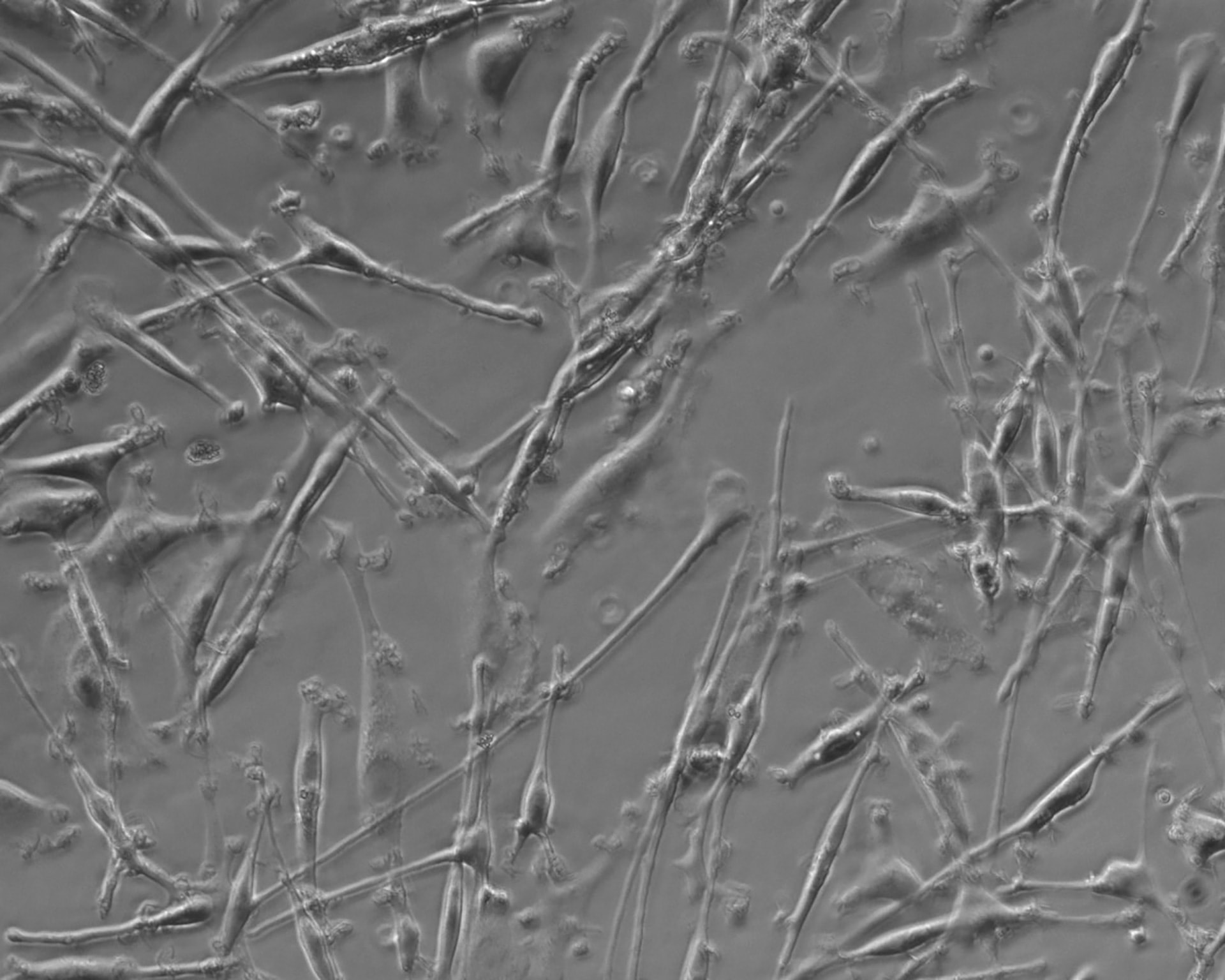
Poetry in my genes
A sprouted bean on a background of blue stars. Images of rounded shapes on stellar blues. Skins and galaxies. Babies and identical people touching each other. A microscope, a lock of hair. A lunar landscape.
Many of those are the images that Juliana Gómez, known as June Juno, created for her project The two strands. She was initially interested in genetics and the mystery behind genes. She soon found a two-stranded thread, which led her to explore in her own life: her DNA is identical to that of her twin sister.
Juno talks with excitement about how there is not yet a theory that explains what happens when a zygote divides to generate two people. When they are born they are identical. In the world of genetics, they are called homozygous twins.
That “decisive” moment is the product of chance. And the chance for her is poetry. For a few years, she has been developing this project that revolves around a search for her origin and her cosmic relationship with the universe, the molecules of life, and the identity of homozygous twins.
Juno says that in this project she began to experiment with different ways of doing and telling. Among other things, she has been discovering and developing her ability to take portraits. Her photos play with reflections and ambiguities, with images from microscopes and telescopes, and with those that she creates with her camera. In addition to this, for a long time, June was dedicated to taking photographs of bands. She likes music a lot and she always has a soundtrack accompanying her projects. This is the playlist for this text.
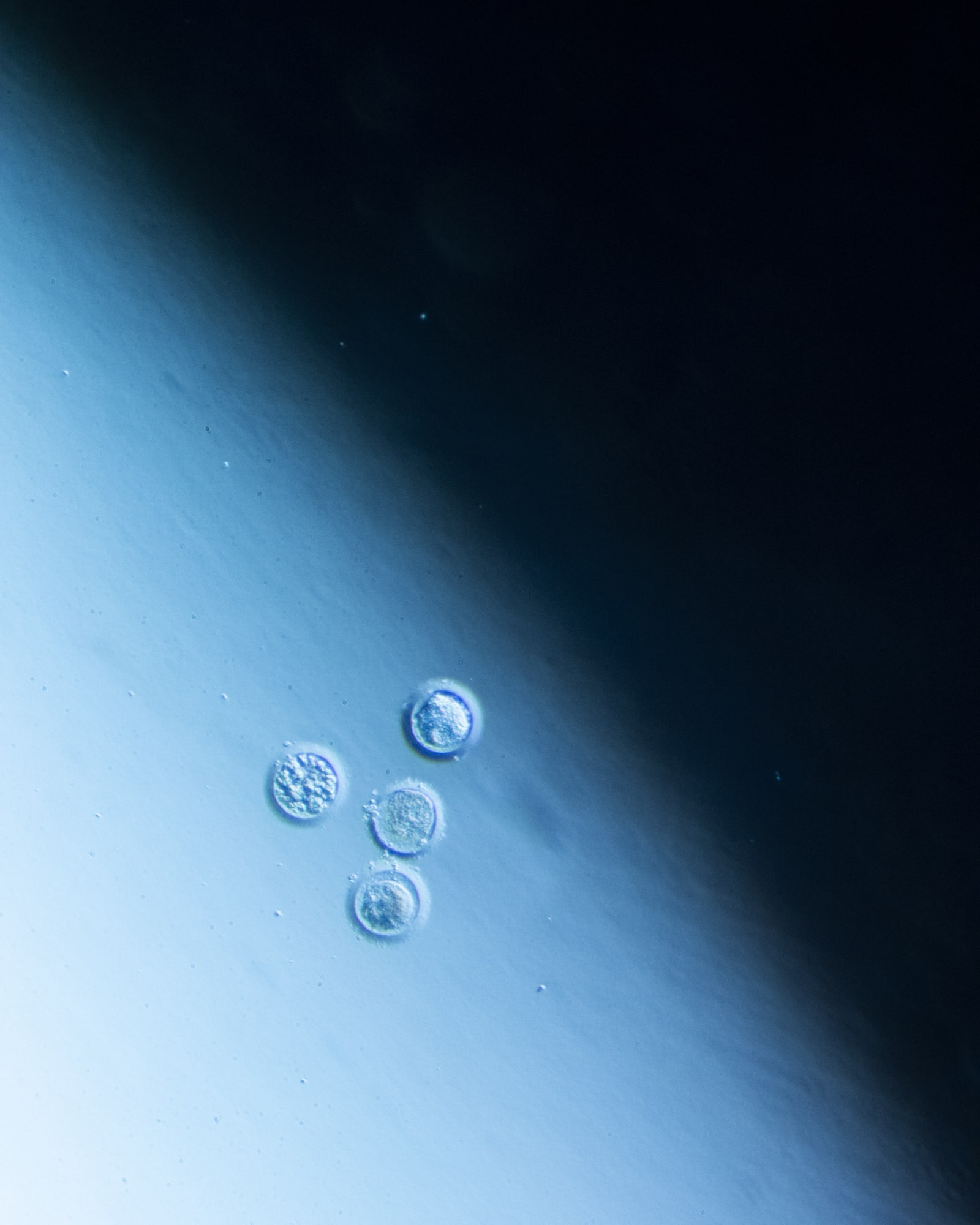
June Juno – The Two Strands
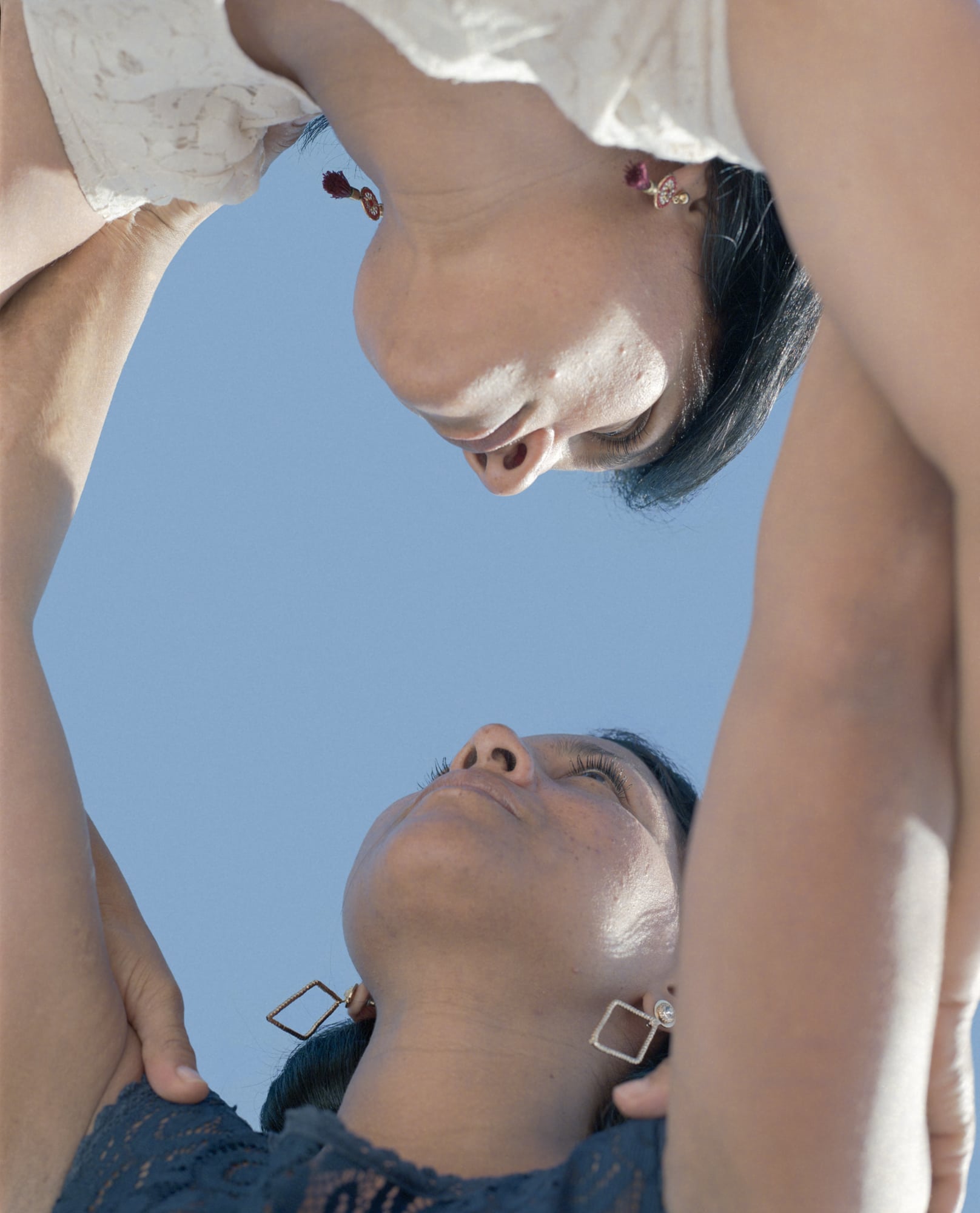
The two strands is not exactly an autobiographical work, but it is very personal, right?
A few days ago I was speaking with the producer of the Exhibition at the MAMM. She has known my work before and she told me: “you always do it as if it were a reflection, that is, it is autobiographical, but it isn’t”. I’m not going to take pictures of myself, but it’s something that has to do with me. Las Dos Hebras is autobiographical because it goes through a very important issue of my identity and that is that I am a twin, in addition to what makes me sensitive and the atmospheres with which I resonate.
There is only one photo of me and my sister, a stock photo. Well, also the blood, the cells, and the red blood cells are mine. All the tests are mine, so I think it does have an autobiographical part.
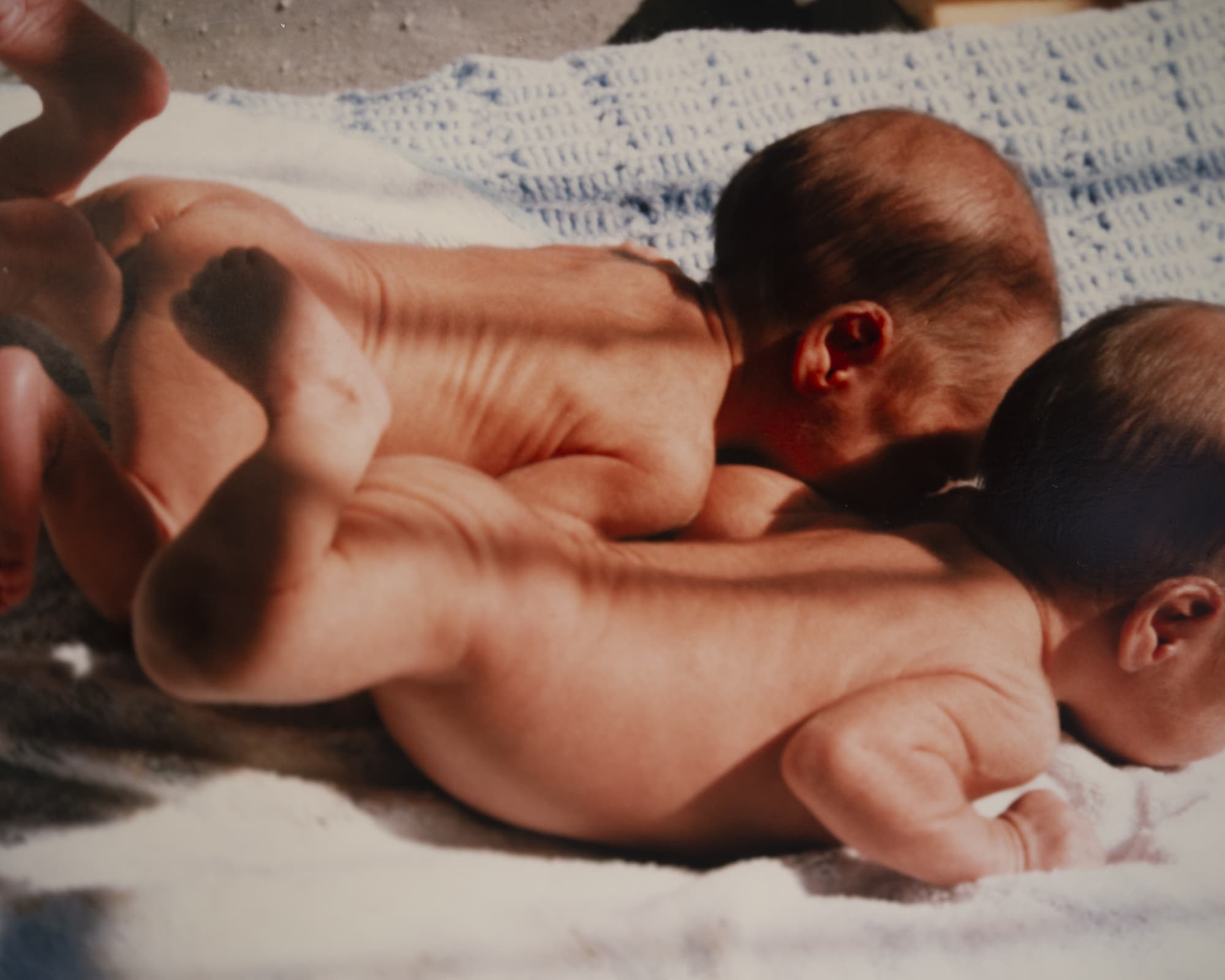
June Juno – The Two Strands
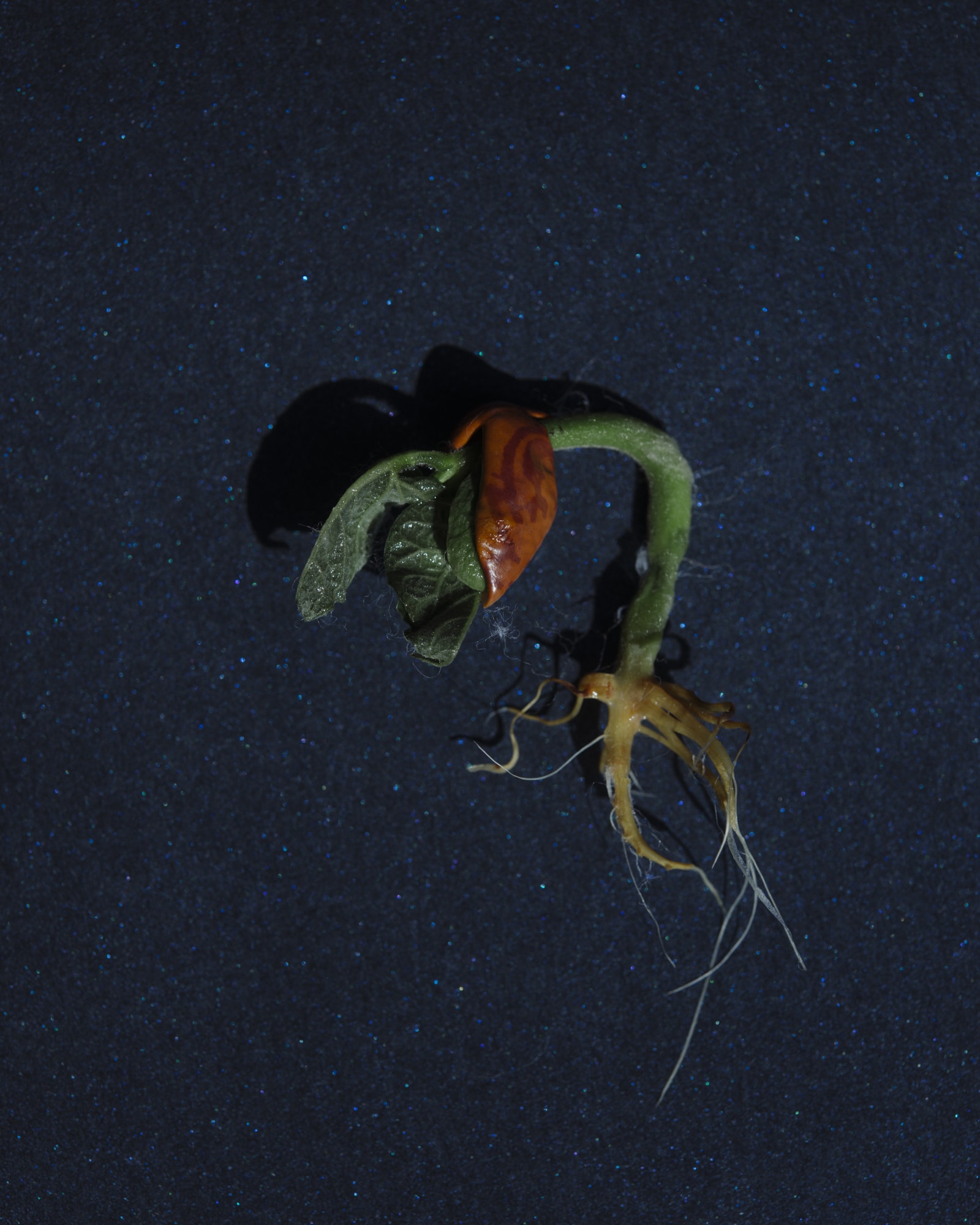
June Juno – Las Dos Hebras
Why that interest and that search to understand the origin?
Something that I would like to highlight is that The two strands is a project about twins and genetics. Even my interest started first in genetics than in twins. A few years ago, I was invited to exhibit in Bogotá in an exercise with female artists. Each one had to choose another creator from any area or discipline, and we had to create something inspired by that woman. I have had an interest in science for some time, for me it has to do with the unknown, with what I do not understand. I find it poetic and interesting to find answers to things.
At that time, I decided to work on someone from Colombia and I met a geneticist who has worked with the human genome. With her, Catalina López Correa, I entered that world. At first, I asked her the most naive questions and then I began to investigate. So, I decided to take some tests and from there some images of the project came out. My interest was more related to the discovery of genes and the history of science.
Shortly after I remembered that when I was a teenager, once a doctor friend said to me “Do you know that you and your sister have the same DNA? That you have the same fingerprint?”, And then thinking about those things that they ask us sometimes, kind if we get sick at the same time … That’s where I started researching homozygous twins, which are identical twins.
It is curious to find a poetic sense in genetics.
I find beauty there. And scientists who work with genetics too. I have spoken with several of them, and many mentioned the beauty of this enigmatic molecule.
Investigating the history of the study of genes, the wonder with which this molecule does its work is mentioned several times. It makes cells have their destiny. It is something that we could never have invented. DNA is mysterious, it is a perfect molecule. It plays, is restless, and has an answer to everything we are.
In the search for my origin, to know myself, and follow my genes, I came across the molecule of life. In other words, what defines the living beings on our planet is DNA.
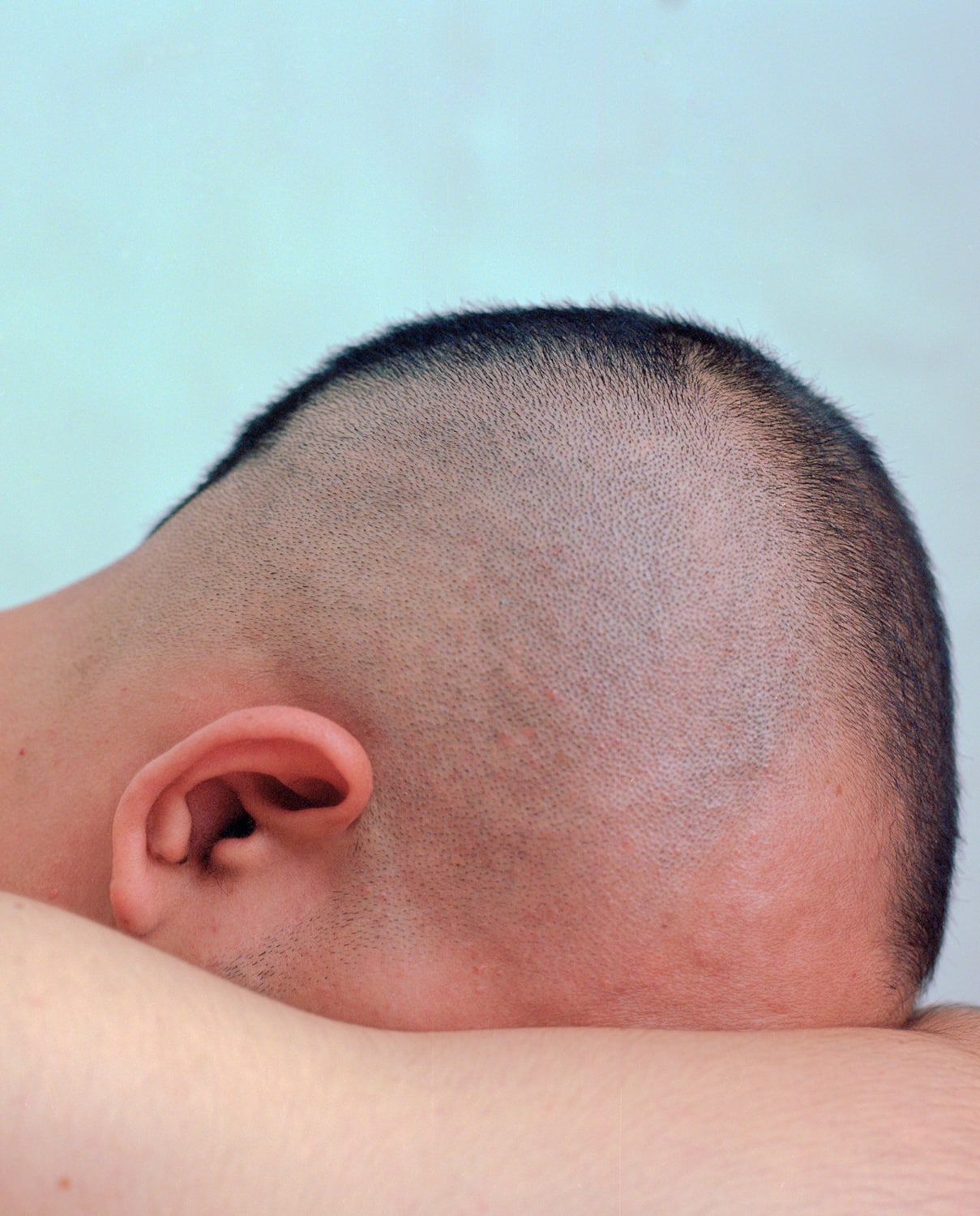
June Juno – The Two Strands
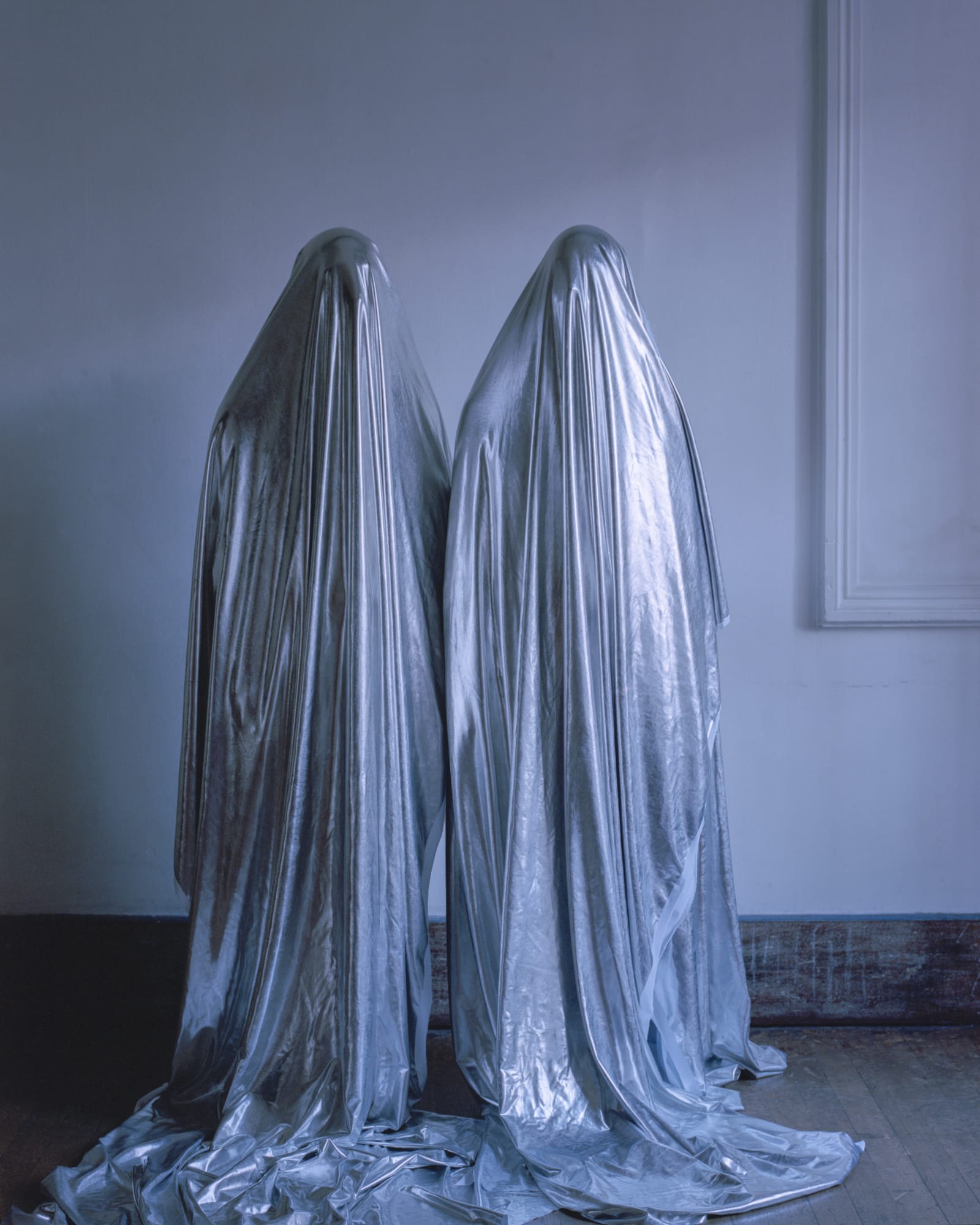
June Juno – The Two Strands
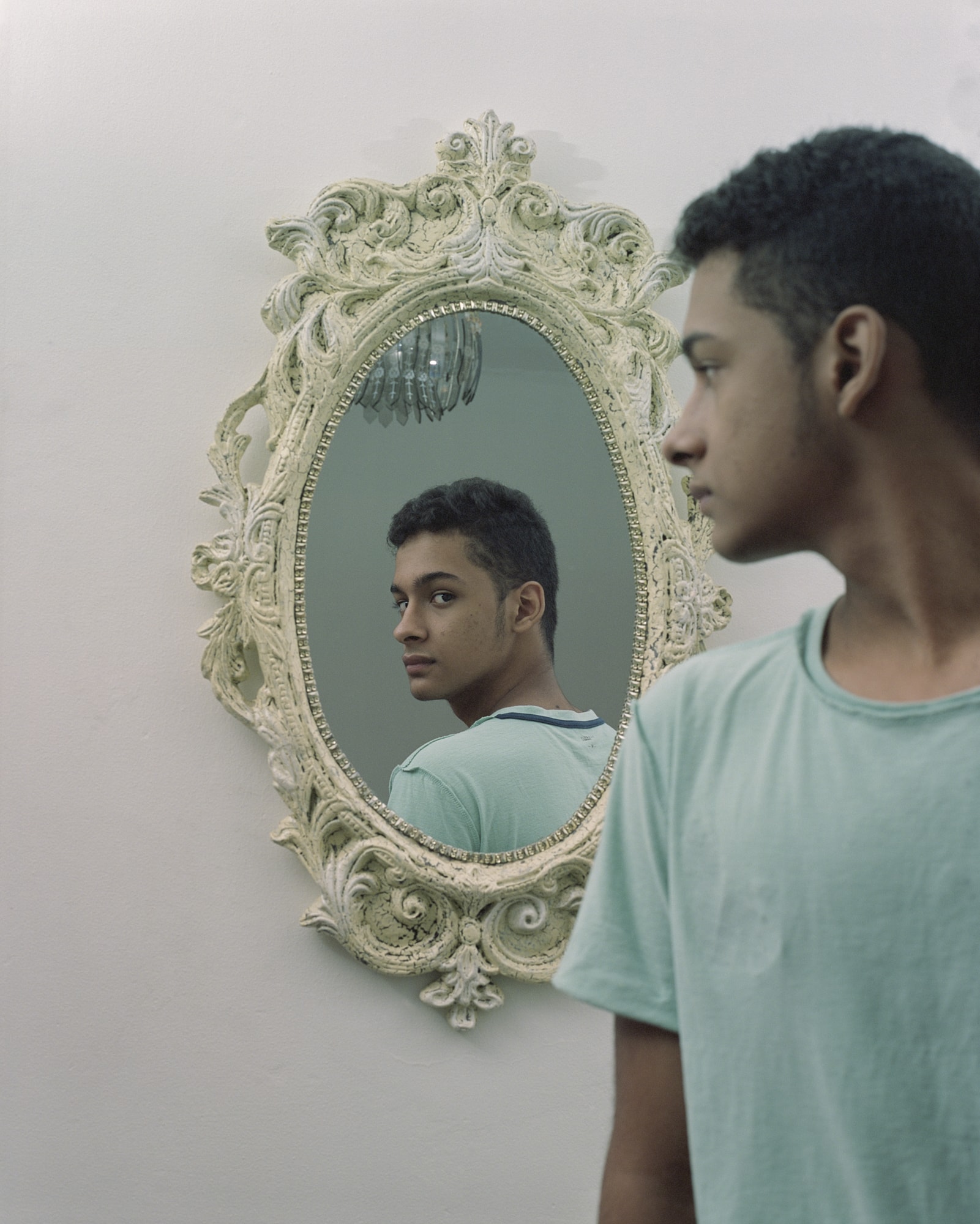
You have spoken on other occasions about the importance of chance and the unknown in your work.
In the creation of homozygous twins, there is something that has to do with chance and genetics also, for example, in errors or in what happens when the DNA code is copied. In the case of homozygous twins, there is no hypothesis, there is no explanation why it happens. With twins, yes, because they depend on the conditions in which women ovulate.
When homozygous twins appear, it happens that when the zygote is formed, something happens and there is a rupture and it splits in two. I spoke here with biologists, geneticists, obstetricians and they did talk about magic. I am very interested in that tiny moment in which nobody knows what happens and everything changes.
In your project, several images refer to the stellar. How do you establish the link between genetics and astronomy?
When I started researching genetics, I came across a definition made by twentieth-century scientists. They described the DNA particle and said that it was a double helix, that it was a mirror, that the transcendental biological objects in this search came in pairs. I decided, then, to stick from there to put things together.
In the attempt to go further, I was looking for twin animals, and I came to a reflection and decided to search the universe, to see if there is also that binary conception. I just read a piece of news that said that the ALMA Observatory had witnessed the birth of a binary star, which they called “twin stars.”
And that’s when I started incorporating those images and playing with others in which you don’t know if what you’re seeing is on the macro or micro scale. Several of the medical tests that I had, I chose them because of the aesthetics of the images they generated. One of them is called electrophoresis and it is a technique that has very phosphorescent colors, a blue that interested me. With that exam and a juxtaposition with music, I made a video that participated in an exhibition. I asked a man that he was watching the piece and he said that he felt like Star Trek.
Research and review of the study of the history of genetics have given me triggers, symbols, and metaphors that orbit the project. This story, of how we know ourselves from the genes, is extensive and deep, there is a long list of characters, theories, and events, some even dark and shameful.
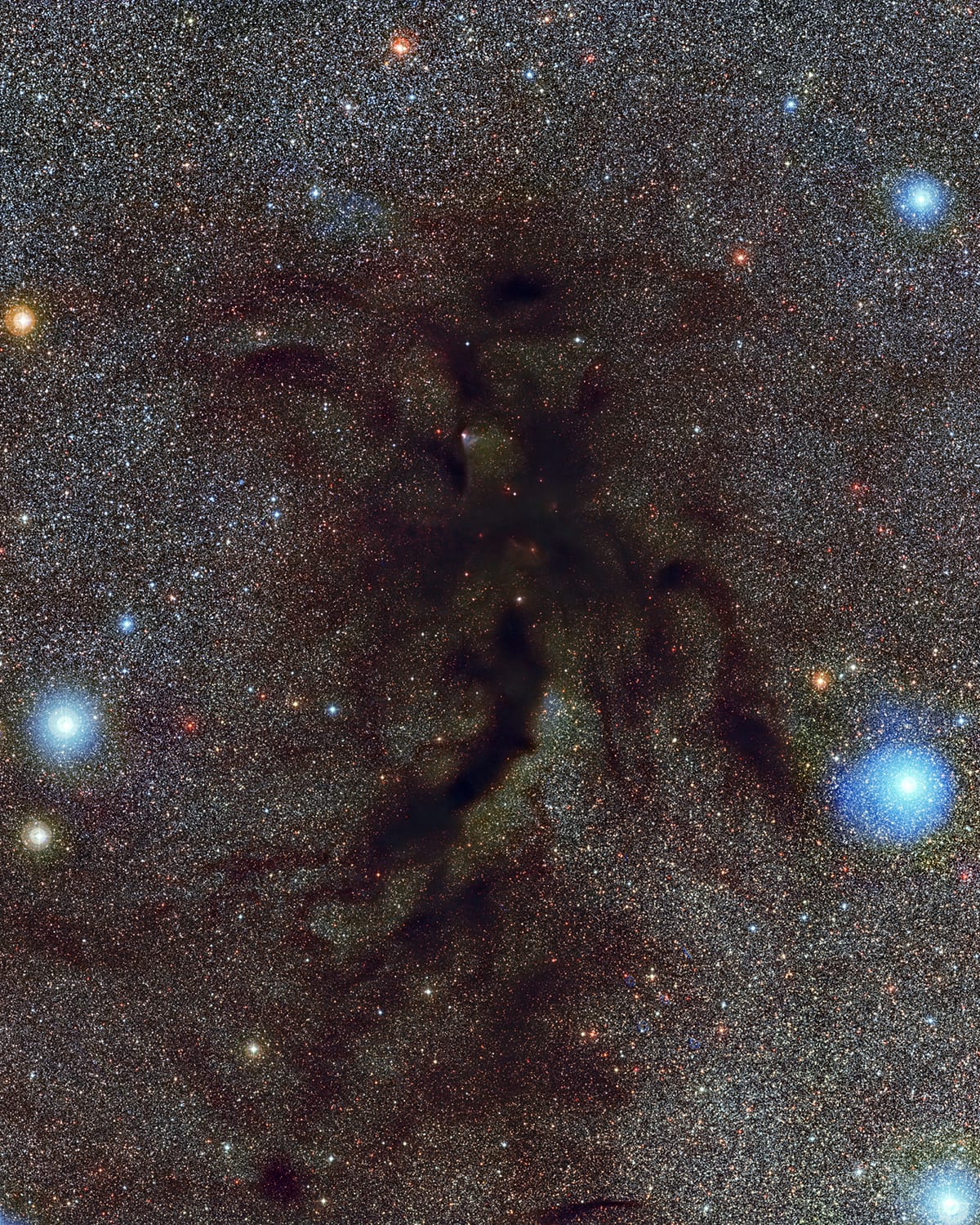
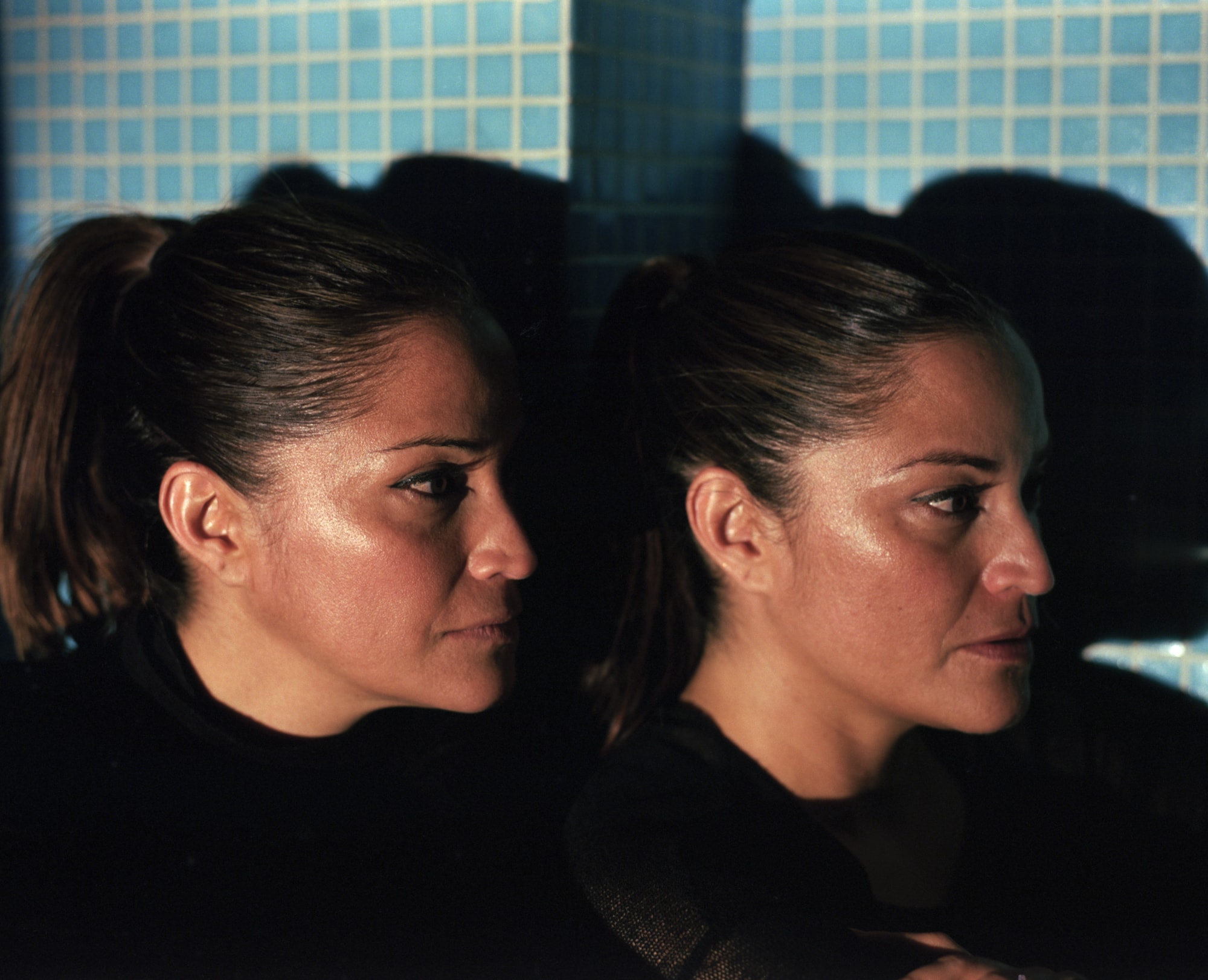
June Juno – Las Dos Hebras
The Two Strands is my version of how I read this story. I would like to mention that I especially rescue the symbols and ideas of two characters: the naturalist and gardener Gregor Johann Mendel, who spent most of his lonely and insecure life drawing, planting, and observing more than 15,000 pea plants in his cold and dark garden. His theories and hypotheses were not recognized in life, it was after his death that they were given the importance they deserved.
The presence of Rosalind Franklin, an independent scientist from Cambridge, also weighs in on the project’s constellation of images. Rosalind was the first person in history to contemplate the double helix structure of DNA, thanks to the fact that she managed to relax the fibers of the elusive molecule by raising the temperature of her laboratory and releasing hydrogen bubbles into the salty water, only then could she, using X-ray refraction, she took the first photograph of the two strands, which she named photograph 51. After this, her contribution was overshadowed by the audacity of two of her colleagues, who, without her consent, revised her notes, and with them, they formulated the molecular structure of DNA, which would later earn them a Nobel Prize in science. They didn’t mention her.


